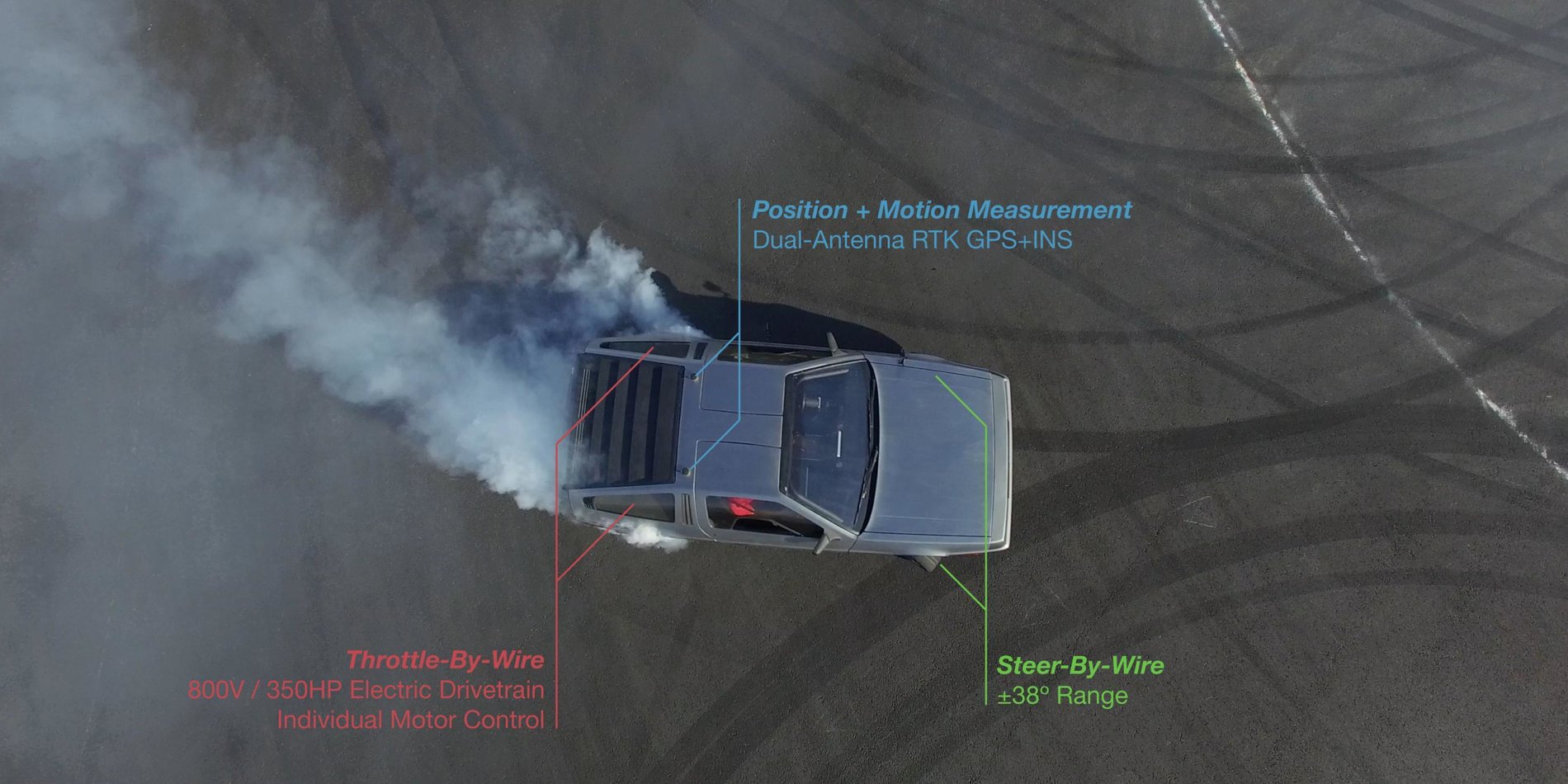Beyond the Limits: The Making of MARTYKhana
Making cars safer by programming them to drift
To ensure safety in the widest possible range of scenarios, automated vehicles must be able to react rapidly if needed. When trying to maneuver quickly, it is critical to consider that if you rotate the car too aggressively, it can become unstable and start to spin out.
The conventional approach to dealing with this phenomemon, that underpins Electronic Stability Control (ESC) and other similar systems, is to restrict the vehicle to stay within conservative limits wherein it is always stable. This is a trade-off: we sacrifice agility, in exchange for making it easy for an average driver - or naive automated system - to control.
One can access a much wider range of maneuvers - and therefore, avoid accidents in a larger number of scenarios - by understanding how to control a vehicle beyond the stability limits. Expert drivers in drifting competitions, for example, can precisely position the car while purposefully operating in unstable conditions. Automated vehicles have the opportunity - and the responsibility - to be much better than the average driver, and thereby remove the need for this trade-off.
The Stanford News article, ‘Automated Vehicle Control Beyond the Stability Limits’, describes the lab’s recent contributions to controlling automated vehicles in these unstable situations. The highlight is a video that shows MARTY - the lab’s electric DeLorean - autonomously drifting through a challenging kilometer-long course.
To accompany the article, this page highlights information about the lab’s automated drifting research, the MARTY test vehicle, and additional media resources.Additional Uncut Video Footage
To accompany the videos from the article, uncut video footage from a complete run of this course is presented from three different perspectives: aerial, interior, and a camera mounted on the roof of the car.
Additional Uncut Video Footage
To accompany the videos from the article, uncut video footage from a complete run of this course is presented from three different perspectives: aerial, interior, and a camera mounted on the roof of the car.
Interior View
Meet MARTY
If you're going to build an autonomous drifting car, why not do it with some style?
MARTY is a 1981 DMC DeLorean that has been extensively modified to serve as a flexible testbed for automated control at and beyond the limits of handling.
PhD Thesis
The PhD thesis Automated Vehicle Control Beyond the Stability Limits by Jonathan Goh describes this research in detail, including the experiments on MARTY. The full manuscript is publicly available through the Stanford Library.
Course Map

The locations of the cones that demarcate the course are shown here, in relative East-North coordinates. This map is also available as a vector PDF.
The cones are divided into three categories: inside of the turn, outside of the turn, and transition cones. The transition cones are closer to the centerline of the vehicle path, and represent a narrower corridor that the vehicle should pass through at low sideslip; these are represented by haybales in the video. The relative East-North coordinates of the outside, inside, and transition cones are also available in .CSV format.
MARTY Drifts Figure 8s
The Dynamic Design Lab's autonomous electric DeLorean, MARTY, repeatedly executes a highly dynamic figure 8 drifting maneuver. During the rapid transitions between +/- 40 degrees of drift angle, the vehicle steers lock-to-lock in about a second, reaching yaw rates as high as 120 deg/s. By studying how to control a vehicle in these extreme situations, the researchers are helping to make autonomous vehicles safer.







